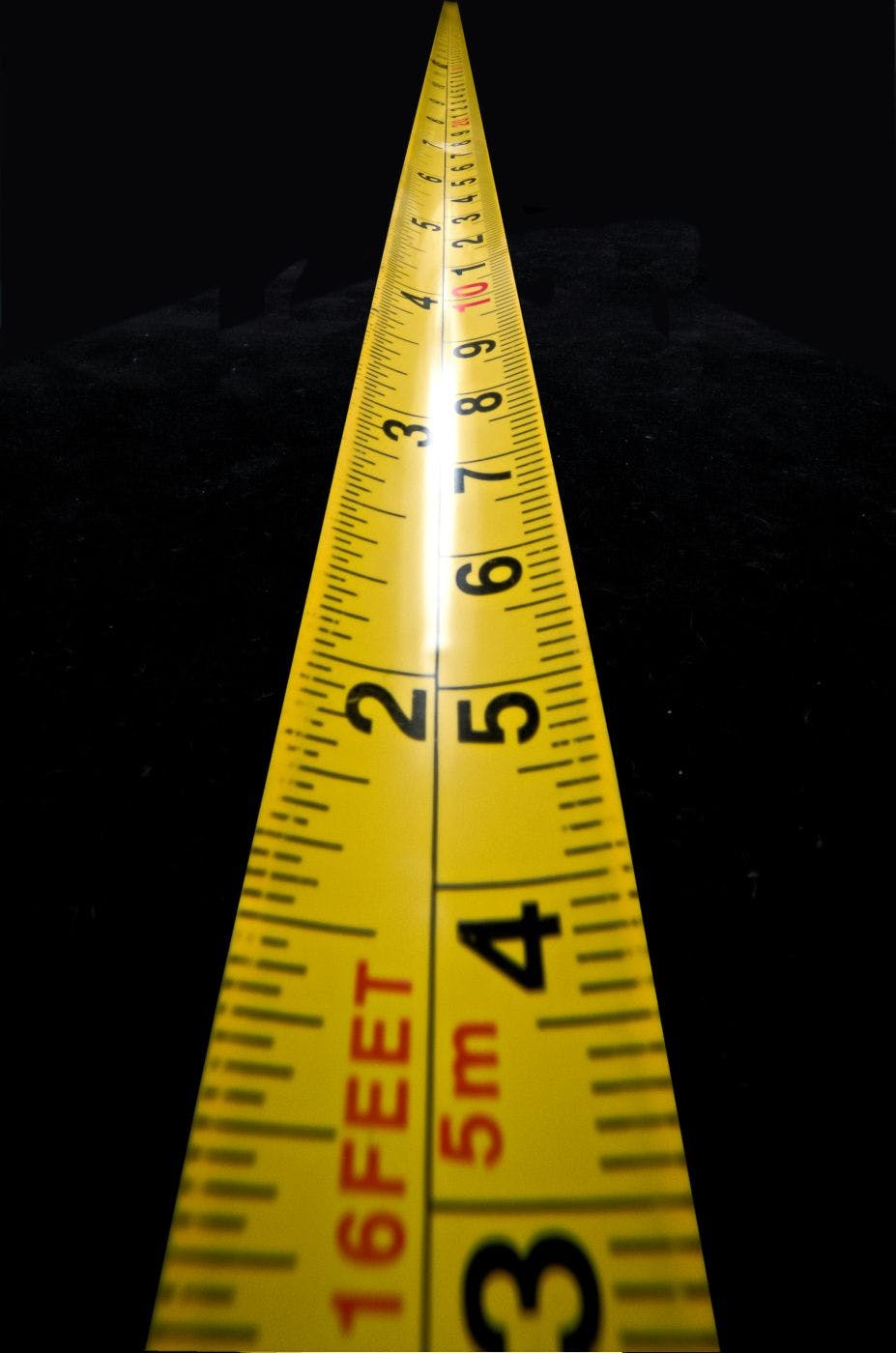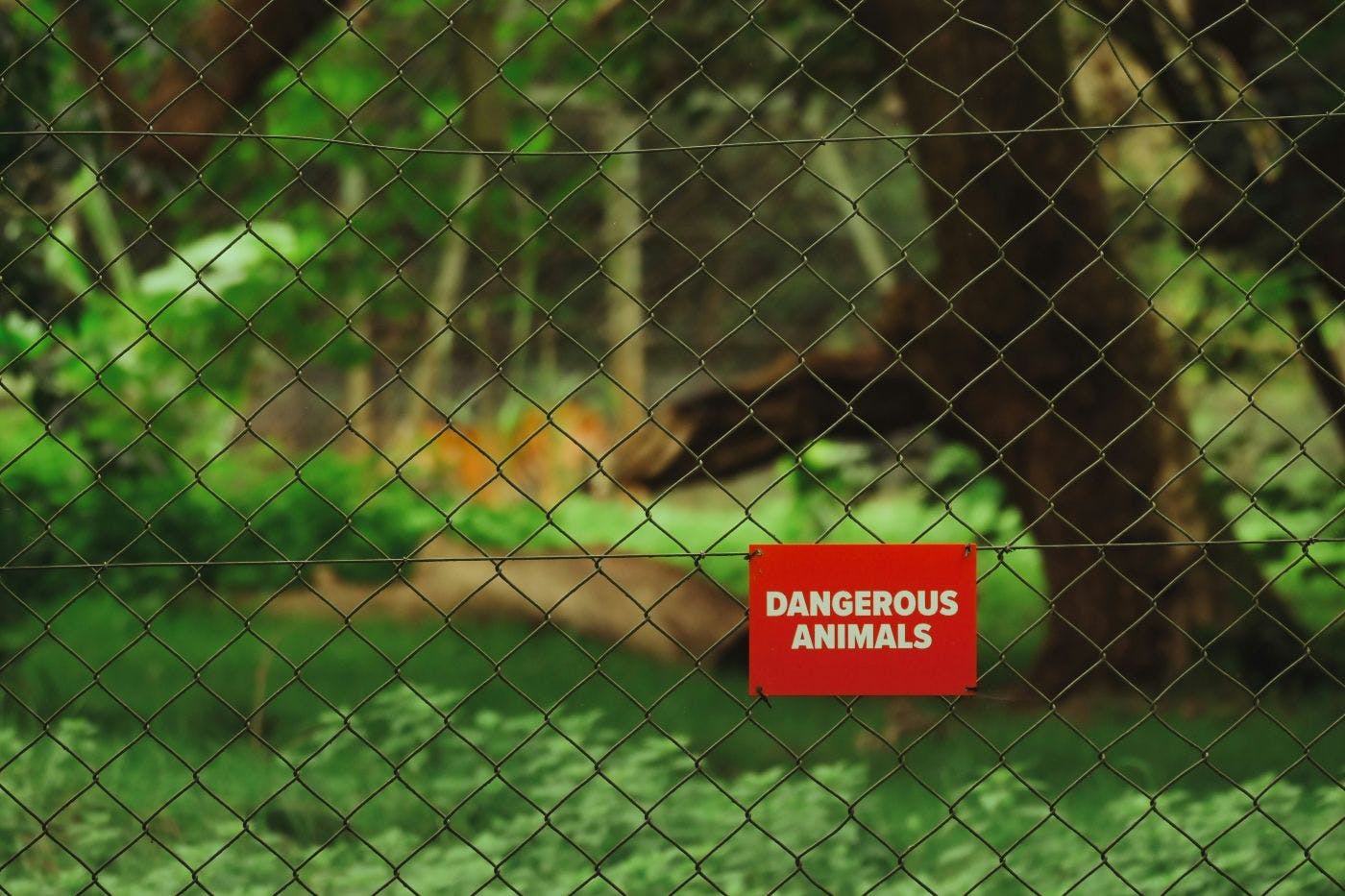
If individuals feel this tension, imagine what it’s like for brands. A brand is nothing if not a professional communicator. Every ad, every tweet, every slogan, every press release — it’s all words, wrapped in design.
I’m distracted. I am a man who traffics in words and ideas. I write a lot about branding here at ThoughtLab, as well as about companies, new products, and marketing ideas. Words are my everyday material — as they are for everyone.
We are all, for the most part, engaged in some type of verbal communication every day. Humans evolved beyond grooming sessions or butt-sniff greetings. We say hello, ask about the day, the wife and kids, and then plunge into our lives — working in the office, driving the truck, teaching the kids, whatever fills our time — we do it by communicating, usually with words.
Here’s the conundrum: what happens when the words we’ve been using for decades, even centuries, are suddenly labeled as bad, wrong, or politically dangerous? What happens when we have to watch every word?
This is what distracts me. I work with words, and I love them. Words can build, and words can break. When life feels impossible, words can support you like steel beams or bone. But what words do I put here — words meant to inform, educate, entertain, spark imagination — if I worry that one random pairing, like college dormmates thrown together, will spark outrage? How do I tell a story, or even make a joke, when I have to constantly edit myself to fit some shifting, unknowable rule about what’s “allowed”?
And I’m just one man in his home office, trying to do his job. What is this like for a brand — a national or international brand suddenly caught in the crosshairs of an overly sensitive society or a political leader? How do we function when language itself feels under siege?
The truth is, this isn’t just my problem. It’s not just writers, comedians, or broadcasters who feel the pressure of every word carrying unintended weight. It’s everyone.
A teacher pauses before answering a student’s question, worried the phrasing could be misinterpreted. A manager re-reads an email five times before hitting send. A parent hesitates before posting a harmless joke on Facebook, wondering if it will land the wrong way. Ordinary, everyday communication is suddenly charged.
We’ve all become amateur linguists, parsing tone, context, and potential fallout before we speak. The casual “off-the-cuff” moment has all but disappeared. In its place, we find caution. And with that caution comes fatigue. Because when every word feels like a potential landmine, conversation itself becomes heavy.
Yet the irony is this: we’ve never needed words more. We live in a time of constant upheaval, where trust is fragile, and connection is precious. The right words can calm, clarify, unite. The wrong ones can fracture, inflame, or divide. Words are no longer just a medium of communication — they’ve become signals, markers of belonging, tools of identity.
Brand Parallel
If individuals feel this tension, imagine what it’s like for brands. A brand is nothing if not a professional communicator. Every ad, every tweet, every slogan, every press release — it’s all words, wrapped in design. And those words are no longer just clever turns of phrase or catchy taglines; they are signals of values, politics, and identity.
One misplaced word in a campaign can ignite a social firestorm. A tone-deaf press release can erode years of trust. A joke that would have been harmless a decade ago can now define the brand for all the wrong reasons. Brands, like people, are living under the same scrutiny — except the stakes are higher, the stage is global, and the fallout is multiplied by millions of eyes and voices online.
And so brands start to behave like that manager double-checking an email. They sanitize their language. They pull back from bold statements. They become bland in the name of safety. But safety and blandness don’t build connection. They don’t create loyalty. They don’t spark imagination.
Here’s the paradox: brands are expected to have a voice, to stand for something, to communicate with personality. But they’re also expected to never misspeak, never offend, never cross an invisible line. That’s an impossible standard — and yet it’s the world every brand now has to navigate.

The Challenge
This is the tightrope every brand now walks. On one side is self-censorship: saying less, playing it safe, avoiding any word or phrase that might spark controversy. On the other side is reckless speech: leaning into edginess without awareness, ignoring how words can land in a fractured, hyper-sensitive world.
Neither extreme works. Silence breeds irrelevance. Recklessness breeds backlash. Both erode trust.
And here’s the hard part: the rules aren’t written down. They shift daily, shaped by culture, politics, algorithms, and even accidents of timing. What feels witty today can feel offensive tomorrow. What feels like a safe campaign in the boardroom can come across as tone-deaf in the real world.
So how does a brand keep speaking with clarity, confidence, and humanity when the language landscape is full of landmines? That’s the real challenge of communication in 2025.
The Backbone of Voice
Every brand needs a backbone. Without it, the language bends with the wind — collapsing under pressure or chasing every passing trend. The same way a person’s character is revealed in hard times, a brand’s voice shows its strength when the ground shakes.
Think about Patagonia. For decades, they’ve spoken with the same clear spine: environmental responsibility above all. Their copy, their campaigns, even their product tags reinforce it. When they famously ran a “Don’t Buy This Jacket” ad, it wasn’t a gimmick — it was their values speaking. People trusted it because it connected to years of consistent behavior. That’s a backbone at work.
Now contrast that with brands that chase the cultural moment without that clarity. They borrow causes, slang, or memes without asking, Does this align with who we are? Inevitably, the result feels hollow. Audiences can smell the wobble.
A backbone doesn’t mean rigidity. It means knowing the few things you won’t compromise on — the values that drive your word choices, campaign tone, even the jokes you tell. For some, that backbone is respect: you’ll never see them mock their own customers. For others, it’s joy: they lean into playfulness no matter the topic. For Apple, it’s privacy. That word shows up not as decoration, but as strategy. “What happens on your iPhone, stays on your iPhone.” Simple, clear, and rooted in a principle, not a passing fad.
The risk of not having a backbone is greater now than ever. In a culture where one word can be clipped, quoted, and shared a million times before breakfast, flimsiness is fatal. You can’t predict every reaction. But you can anchor your voice in something unshakable.
The truth is, words are always political, always cultural, always loaded. You can’t scrub them clean. What you can do is make sure your words grow from a spine your audience recognizes. That’s why some brands recover quickly after a stumble — people say, “That sounded off, but it’s not who they really are.” Others never recover, because the stumble only exposed what wasn’t there to begin with.
A backbone doesn’t script every word. It tells your audience — and your employees — that the words today are connected to the promises yesterday, and tomorrow’s voice will line up too. That continuity is what builds equity.

Reading the Room
Words never float in empty air. They land in rooms—rooms full of people, emotions, histories, and expectations. A joke, a tagline, a slogan: each one is heard through the filter of the moment it’s spoken in.
Brands often forget this. They fall in love with a clever line in the boardroom, only to watch it collapse in the real world. The infamous Pepsi ad featuring Kendall Jenner handing a police officer a soda is a perfect example. On paper, it was a message of peace and unity. In the cultural room it landed in—amid nationwide protests over police brutality—it felt tone-deaf, dismissive, even insulting. The ad wasn’t just criticized; it became a meme of corporate cluelessness. Pepsi didn’t read the room.
Now compare that with Oreo’s quick thinking during the 2013 Super Bowl blackout. A simple tweet—“You can still dunk in the dark”—felt witty, timely, human. Same format: short, playful copy. Different result: people loved it because it understood the moment. Oreo read the room.
Context changes meaning. “Bold” language can sound inspiring during a product launch, but arrogant in the middle of a recall. Humor can energize during a holiday campaign, but feel insensitive in the wake of tragedy. Even the platform matters: what feels light on TikTok may come across as careless in a formal press release.
This isn’t about walking on eggshells. It’s about situational awareness. Before a brand speaks, it has to ask: What room are we stepping into? Who’s in the chairs? What just happened here?
Reading the room doesn’t mean abandoning your backbone—it means expressing it with sensitivity to context. Dove’s long-running “Real Beauty” campaign worked because it wasn’t just rooted in the value of body positivity; it also resonated in a cultural moment when women were loudly rejecting impossible beauty standards. Dove spoke with backbone and awareness.
In a hyper-connected world, the rooms change constantly. They’re global, digital, and fast. A phrase meant for one audience can be screenshotted and carried into another in seconds. That’s the challenge, and also the opportunity. Brands that read the room well don’t just avoid mistakes—they create moments of deep connection. They show they’re paying attention.
Because at the end of the day, reading the room isn’t about avoiding offense. It’s about respect. It’s about proving you see the people you’re talking to, not just the message you want to deliver.
Learning to Recover
Even the strongest brands, with clear backbones and sharp awareness, will stumble. A phrase will land wrong, a campaign will miss the mark, a cultural shift will make yesterday’s clever line feel tone-deaf today. That’s not failure—it’s inevitability.
The real test isn’t whether you avoid mistakes. It’s how you respond when they happen. Recovery, done right, doesn’t just repair trust; it can actually deepen it.
Take Airbnb. In 2016, hosts of color began sharing stories of racial discrimination on the platform—guests being denied stays or treated unfairly. The problem wasn’t in Airbnb’s ads; it was in the lived reality of its brand ecosystem. At first, Airbnb faced heavy backlash. But instead of denying or dodging, they admitted fault, issued a public apology, and rolled out real policy changes: bias training, anti-discrimination pledges, and stricter enforcement. The apology wasn’t just words—it was paired with action. That recovery built more trust than a perfect silence ever could have.
Contrast that with United Airlines’ infamous “passenger dragged off the plane” incident. The initial corporate response was robotic, defensive, and focused on procedure rather than humanity. It took multiple attempts before they found the words people needed to hear: empathy, accountability, and change. By then, the damage was far deeper.
Nike offers a third angle: the Colin Kaepernick campaign. It wasn’t a “mistake” in the traditional sense, but it was a calculated risk that many predicted would require recovery. When backlash came—burning shoes, calls for boycotts—Nike didn’t backpedal. They doubled down, standing by Kaepernick and their message of “Believe in something. Even if it means sacrificing everything.” Sales surged, and Nike’s cultural relevance strengthened. Sometimes recovery means not retreating but affirming your stance with clarity.
What ties these examples together is honesty. Audiences don’t expect brands to be flawless. They expect them to be human: to own missteps, explain themselves without spin, and take visible steps to repair.
Recovery is also where backbone shows itself. If you apologize without conviction, people sense it. If you stand firm without compassion, people resent it. The strongest recoveries balance humility with confidence. They remind audiences: This is who we are. We slipped. Here’s how we’ll do better.
Because in the end, mistakes don’t destroy trust—silence and defensiveness do. Brands that learn to recover don’t just survive the stumble. They come out stronger because people see the spine beneath the words.

Measuring the Right Things
For decades, brand equity was measured in the simplest ways possible: recognition and recall. Could a consumer pick your logo out of a lineup? Did they remember your jingle? If the answer was yes, you were told you had equity.
That way of thinking made sense when brand-building was about mass exposure. However, by 2025, those metrics may feel outdated. People don’t just remember brands—they interact with them, judge them, and share them in real time. A million people might recognize your logo, but if they don’t trust you, if they don’t want to stand next to you in public, that recognition is meaningless.
The real test of equity today is found in three places: interactions, perceptions, and connections.
Interactions: Does your brand actually work for people in the moments that matter? Amazon’s equity isn’t just about its logo or ads—it’s built in the speed of delivery, the ease of returns, and the reliability of service. Every smooth transaction reinforces trust. Every failed one erodes it. Brand equity grows or dies in those lived experiences.
Perceptions: Do people believe you? This is where the “say–do gap” matters. Tesla, for years, built immense equity on the perception of being the bold pioneer of sustainable transport. But as stories of broken promises, safety issues, and erratic leadership piled up, that perception began to shift. Recognition hasn’t dropped—everyone still knows the brand. But perception has changed, and with it, equity.
Connections: Who do you stand next to? What communities are you part of? Equity today is networked—your value is shaped by the partnerships, creators, and movements you align with. Think of Apple again: its ecosystem of apps, developers, and products makes it feel indispensable. Or look at Meta (formerly Facebook): despite billions of users, its brand connections are often seen as exploitative rather than empowering. The ecosystem itself changes how people view the brand.
Traditional surveys don’t capture this. Equity isn’t static sentiment on a scale of 1–10. It’s alive. It’s the sum of every interaction, every perception shift, every connection made or broken.
The smartest brands have already started measuring differently. They track whether customers can restate their values in their own words. They watch how quickly advocates defend them when critics pile on. They look for resilience: when a mistake happens, does the network hold, or does it collapse?
Because here’s the truth: awareness without trust is noise. Equity without connection is fragile. What matters most isn’t whether people know you exist. It’s whether they believe you, rely on you, and want to be seen with you.
That’s the brand equity of 2025.
Closing Thought
I began this piece distracted by words — their fragility, their danger, their weight. That distraction is still there. Words matter to me because I love them. They build and they break, they connect and they divide. And yet, the more I’ve wrestled with this, the more I see that words don’t exist on their own. They live inside systems.
For individuals, that system is our character — the backbone that shapes what we say. For brands, it’s more complex: a backbone of values, an awareness of context, a willingness to recover, and a way of measuring trust beyond recognition. Words gain power when they are backed by those systems. Without them, they wobble. With them, they endure.
So yes, I’m still distracted. But maybe distraction is the point. It forces me — and it should force every brand — to pay closer attention. To think harder about the rooms we’re speaking into, to prepare for the moments we’ll inevitably stumble, to measure what truly matters.
Because in 2025, brand equity isn’t about being the loudest voice in the room. It’s about being the voice people believe, the voice they trust, the voice they want to stand next to when it counts.

